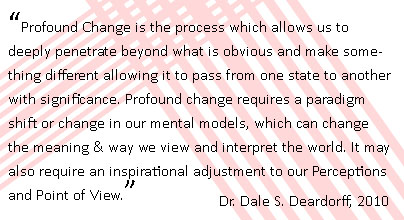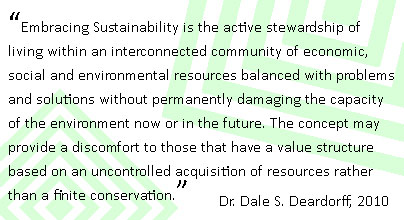|

Leading Relearning to Achieve Organizational Excellence
Continuing to perform in 2013 will require leaders to help move their organizations forward pursuing organizational excellence. What this really means is finding ways to help them work smarter. To do so, requires that you must not repeat mistakes. This means you must improve your current processes and explore new opportunities. Unfortunately, these goals and statements are the same challenges we faced last year and the year before, with limited success.
In reality, what seems to be happening in modern organizations is that we continue to make some of the same mistakes over and over. So what are we doing wrong?
Prior to his passing, Shel Rovin gave me the answer. He was a pioneer of healthcare economics, management, and executive leadership programs at the Wharton Fellows Program. His simple but bold statement was that we needed to unlearn our previous behaviors before we relearned new ones. He explained that our natural tendency was to repeat the actions and behaviors we know and are comfortable with. In order to make “change” required erasing that comfort and replacing it with new knowledge and learnings.
It sounded so easy, that the epiphany of it escaped me for years. Recently, I have been working with a great team that has had exactly that same problem. They keep repeating the same mistakes and don’t know how to resolve it. They have the “Best Practices” to base their current actions on and “Lessons Learned” to create a checklist and database of actions to learn from. Yet they continue to struggle with their performance and efficiency.
What they (and most modern organizations) don’t have is a process in place that defines how to relearn. These organizations focus on retraining with the assumption that people will automatically change their actions and behaviors. Additionally, they have no experience with the actions of unlearning. When asked why they continue to make these same mistakes, they try to articulate with answers that make sense, but rarely create honest answers. For example:
-
They are too busy to assess their situations accurately.
-
They don’t take the time to put measures in place to prevent reoccurrence.
-
In order to prevent the likelihood of repeating the mistake, they don’t do any root cause analysis mistake proofing.
-
They are not correctly documenting lessons learned.
-
When starting new tasks, they do not look at mistakes made previously.
When reviewing the responses above, you can start to get a sense of what might be happening within the organizational culture which is not positive. A deep dive into the shared assumptions, espoused values, and belief systems might really expose the following:
-
People hide their mistakes or ignore them.
-
There exists a culture of rewarding the fix but not the prevention.
-
People are afraid to ask others if they are doing things right because they could appear to be stupid.
-
There is a fear to ask for help, for fear of retribution if mistakes are brought forward.
-
It takes extra work to analyze mistakes and people do not want to take the time.
These mindsets can make it impossible to achieve organizational excellence.
 Organizational Excellence Organizational Excellence
To achieve organizational excellence, requires us to clarify what these two words actually mean to our people, teams, and leaders. Too often it is measured by an arbitrary qualitative measurement or set of impressions. A better measurement and understanding of organizational excellence is provided by Peter Vaill, author of “The Purposing of High-Performing Systems”. His seven broad findings of system performance require that the organization must meet one or more of the following measurement criteria:
1. They are performing excellently against a known external standard.
2. They are performing excellently against what is assumed to be their potential level of performance.
3. They are performing excellently in relationship to where they were at some earlier point in time.
4. They are judged by informed observers to be doing substantially better qualitatively than other comparable systems.
5. They are doing whatever they do with significantly fewer resources than are required.
6. They are perceived as exemplars of the way to do whatever they do, and thus they become a source of ideals for the culture within which they exist.
7. They are the only organizations that have been able to do what they do.
With this clear systems perspective of organizational excellence, we can start to understand that the way we define performance and excellence are dependent upon the organizational values. Additionally, these organizations are clear on their “Purpose” and near term objectives for fulfilling these objectives. There is a commitment to that purpose with high motivation and energy invested in methods, tools, and idea systems.
Organizational excellence is also an indication of clear and strong teams and leaders. These leaders are reliable and predictable. They are seen and recognized by others as leaders of core competencies, not just participants in skills. This excelling in skills is illustrated by George Davis and Neil Hymas in “The Six Stages of Learning”. In this skill based learning model you move through the following stages:
Blissful – Not knowing we don’t know
Frustrated – Knowing we don’t know
Awkward – Knowing, but clumsily
Natural – Automatic, habitual, routine
Confident – Skills integrated into useful sets
Right – Congruence of skills with belief systems
As you pursue organizational excellence, the practice and repetition of skills allows you to become more natural at achieving them at a proficiency level. Utilizing the six stage model, we can clearly see that without moving into a natural stage of learning we cannot achieve organizational excellence. The brain has a built in learning process which is motivated to learn, solve problems, create a sense of logic and see things in a new ways. If we use this process, our learning will be more accurate than organization's that simply value rote memorization.
Additionally, this skill based model is a compliment to the Natural-Learnings Stages research conducted for the multiple groups and levels of the NHLP (Natural Human Learning Process).
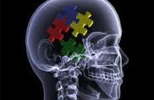 Learning Learning
As described previously, the phases of learning go through stages. There are also different learning styles. People can learn in vastly different ways and no specific one learning style is better than the other. Some experts say there are as many as seven different learning styles; but it’s easier to narrow down to three key types of learning. These are:
-
Listening Learners – Learn by hearing the learning information (Auditory).
-
Seeing Learners – Learn by seeing a demonstration of the learning information (Visual).
-
Experience Learners – Learn by sensory experience of the learning information (Kinesthetic).
Realistically, everyone uses all three of these learning styles to some degree and in combination at the same time. However one style may be dominant to optimize learning effectiveness. There are two other features of learning which are extremely relevant, which are based on how our individual brains are wired.
The first feature is our modality, which is how you perceive information most easily. The second is your brain dominance, which is how you organize and process information. To determine brain dominance (how you process information) there are many models but most studies identify four styles which can influence our learning.
-
Concrete Sequential (left brained) – thinkers notice and recall details easily, need to organize tasks into step-by-step processes, and strive for perfection.
-
Abstract Sequential (left brained) – thinkers like to think in concepts and analyze the information.
-
Abstract Random (right brained) – thinkers organize information through reflection and thrive on unstructured, people oriented environments.
-
Concrete Random (right brained) – thinkers are based in reality and have an experimental attitude.
Concrete Sequential thinkers are linear and process information in an ordered, sequential, linear fashion. Reality consists of what they can detect through their physical senses of sight, touch, sound, taste, and smell. They notice and recall details easily and remember facts, specific information, formulas, and rules with ease. “Hands-on” is a positive way for these people to learn. They need to organize tasks in a step-by-step process and strive for perfection as they move forward. Additionally, they like specific directions and procedures.
Abstract Sequential thinkers are notorious indecisive. They will cross check everything and easily get caught up in deliberation. Their process is intellectual, logical, analytical, and rational. They use language in a way that is riddled with polysyllabic words with precise meanings. For them to learn most effectively, they need a mentally stimulating environment that is generally ordered and quiet.
Abstract Random thinkers are non-linear and multi-dimensional. Their creativity is based on emotional attachments, relationships, and memories. They can be perceived as emotional, insightful, perceptive, and critical; and are likely to maintain unusual organization systems. They tend to communicate well in metaphoric language, with big movements, and colorful turns of phrase. For these thinkers, an emotionally and physically free environment, that is active and colorful, will be the most stimulating.
Concrete Random thinkers rarely accept outside authority when validating information. They require demonstration and personal proof. Their thinking style tends to seem intuitive, impulsive and independent. This type of thinker will have a lot of projects going, but tend to not finish them. They are seen as practical dreamers, effective troubleshooters, and experimenters. They learn best in mentally stimulating, orderly, and quiet environments, that do not have an authoritative feel.
Most current organizational, academic and personal learning processes, typically do not show connectivity to the elements of unlearning and relearning because these are usually discussed as separate learning systems. To fully appreciate a learning process, we must consider the learning assumptions, mental models and perceptions with an illustration that accurately describes the connected nature and flow of knowledge thinking.
 Thinking Flowscape Thinking Flowscape
Without going into mathematical models of learning systems, trying to create context out of chaos or mapping an expansion of lower-level to higher-level learning, what is needed is a simple and clear illustration for how we create knowledge. This is not meant to dismiss the current organizational learning systems established by Argyris, Bateson, Schön, Rogers and Morgan, but to add to their discussions.
What can help diagram this thinking is an Edward de Bono's “Water Logic” exploration, which can review the systemic nature of how things move from one learning element to another. The use of flowscapes allows logical description and exploration in a proposed self-organized system. The illustration below was constructed to demonstrate an accurate Learning Attention Flowscape process.
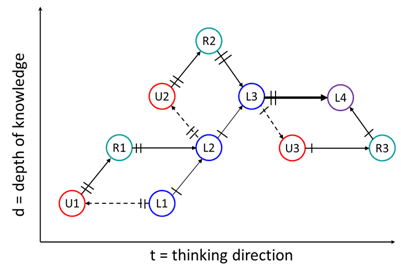
Behavior of Learning Attention Flowscape
In this 2-dimensional learning system illustration, we need some operational definitions and water logic behavioral systemic rules. These are represented in the flowscape diagram by the following common language:
-
L = a Learning step with a numerical hierarchy (e.g. L1 = the first Learning position). This is the system starting point for identifying the beginning Learning Attention Flowscape.
-
U = an Unlearning step with a numerical hierarchy (e.g. U2 = the second Unlearning position). Unlearning is the process of forgetting, discarding or purposely losing knowledge. It can also be the cognitive step of putting aside certain knowledge as being false or binding.
-
R = a Relearning step with a numerical hierarchy (e.g. R3 = the third Relearning position). Relearning is the process of learning something again. It can allow you to regain knowledge of material that has been previously learned or an experience that has been neglected or forgotten.
-
D = the depth of knowledge. This can illustrate the increase or decrease in the subject knowledge. An increase in knowledge can happen by adding tacit or explicit knowledge to the understanding of a subject, situation or event. Information can be added that does not increase knowledge but does add detail. The depth of knowledge can be lowered or reduced by the elimination of redundant or incorrect information added to the system.
-
T = the thinking direction of thinking process. It has the ability to move thinking forward and if done incorrectly, the thinking could move backward. This is not a measure of good or bad. It is a flow description of thinking created by a continuum of situations and events.
Now that we have established a language to describe the system elements, we need to identify the rules for movement behavior in this learning system. Any element linkage connection has a directional arrow to show the flow of “from-to”. There are two possible paths the learning can flow through. The first is represented by a double slash at the start of the flow indicating a primary path. The second is represented by a single slash at the start of the flow indicating a secondary path as seen below:
Primary Flow Path = From To the Primary Flow Path is a learning path that follows the process of Learning by Unlearning, Relearning and creating new knowledge that increases the depth of your knowledge and moves your thinking forward. To the Primary Flow Path is a learning path that follows the process of Learning by Unlearning, Relearning and creating new knowledge that increases the depth of your knowledge and moves your thinking forward.
Secondary Flow Path = From To the Secondary Flow Path is a learning path that ignores the process of Learning by Unlearning, Relearning and creates additional knowledge that does not increase the depth of knowledge but can move thinking forward. To the Secondary Flow Path is a learning path that ignores the process of Learning by Unlearning, Relearning and creates additional knowledge that does not increase the depth of knowledge but can move thinking forward.
Change in Context = From  To a Change in Context is a learning path that creates a new reflective perception that provides a new awareness of apposing thinking patterns. Additionally it does not resolve multiple contradictions but allows a juxtaposition where they can both exist in parallel. To a Change in Context is a learning path that creates a new reflective perception that provides a new awareness of apposing thinking patterns. Additionally it does not resolve multiple contradictions but allows a juxtaposition where they can both exist in parallel.
A “Myth” = From  To a “Myth” is an organizational false assumption about any knowledge domain that provides a false understanding leading to inaccurate Learning. Additionally, it does not increase the depth of knowledge and in certain situations leads to problems or issues that may create a movement backward in the thinking direction. To a “Myth” is an organizational false assumption about any knowledge domain that provides a false understanding leading to inaccurate Learning. Additionally, it does not increase the depth of knowledge and in certain situations leads to problems or issues that may create a movement backward in the thinking direction.
Additionally, there are environmental system constraints in this 2-dimensional learning illustration for establishing the axis of thinking direction and depth of knowledge (low versus higher). Over time, the proposed system can become stronger or weaker in knowledge. As seen above, there are three separate learning loops. Each loop can be explained by a situation story.
To illustrate the first learning loop (L1, U1, R1 & L2), we’re going to take a look at a young man named Tom, who is 16 years old, and learning how to drive his first car, an automatic shift Toyota. To do this, Tom is going to need to unlearn what he’s seen on TV, and how he’s driven cars in video games. In this loop, Tom gains a basic depth of knowledge in driving.
Two years later Tom is offered a position driving a delivery truck at work but he must learn how to drive a stick-shift interface. This creates our second learning loop (L2, U2, R2 & L3). He has had to unlearn driving an automatic shift car and relearn a new driving process using a stick shift and clutch. Here we can see another increase in his depth of knowledge and thinking direction.
Finally, our third learning loop occurs (L3, U3, R3 & L4) which includes a myth between L3 and L4. In this process Tom follows a secondary learning path, avoiding the unlearning and relearning steps entirely. Here Tom hears that a 5 speed transmission is harder to drive than a 4 speed. Tom having learned how to drive both a 4 and 5 speed, realizes that this myth has no substance; there is no added difficulty between driving these engines. So Tom, has moved forward in his thinking direction, but hasn’t increased his depth of knowledge, since both driving processes are virtually the same.
All too often we think that an organizational learning process is different than an academic or personal learning system because we're not focusing on working adults. In fact, what we need to really recognize is that the problem of making the same mistakes over and over requiring a relearning process may be universal. Imagine the increase in everyone’s capacity to learn that could be accomplished by the institution of a "Learning-Unlearning-Relearning" process that accommodates our brains capacity for constructing knowledge.
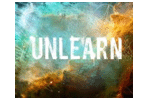 Unlearning Unlearning
Unless there is a direct need to change a behavior, typically our brains continue down the same path with the same mental models, biases, or paradigms. Unlearning, unfortunately is neither a natural skill, or is it an easy one to acquire. It may feel unnatural at first, but it is really just a different way of thinking about your learning.
Unlearning is the act of releasing old knowledge and many times some new learning can't take place until some unlearning occurs first. Unlearning is a critical skill, especially in today's world of rapid and constant change. It is a skill every leader and organization must possess in order to safely navigate the future.
To unlearn a behavior requires you to first recognize the unwanted or unnecessary behavior. Then you must purposefully embrace or learn a new replacement behavior and finally remove or discard the old behavior. This is easier to say than it is to do because our brains are a self organizing & patterning chemical system which naturally can fall into an auto-pilot thinking mode.
This means we don't need to make a tremendous number of decisions in our lifetimes. Imagine how long it would take to get dressed if you had to think about which sock to put on first, or which shoe needed to be worn first. The simple task of getting dressed would be so time consuming and confusing we would end up exhausted before we even started to think about breakfast. The autopoetic nature of this conditional behavior allows us to concentrate our efforts on hard decisions. It affects our more complicated behaviors too, how often have you driven your car to work, the same way over and over, only to realize you don’t remember certain sections of the journey?
Unless we identify a “need” for a new thinking pattern, we’re going to continue falling into the same old routine autopoetic behavior. So "unlearning" is a required step in that 3 step process we described previously (learning-unlearning-relearning). Successful unlearning is required for accurate information to be mentally reinforced and openly recognized.
While it sounds so easy conceptually to accomplish this, we are fundamentally terrible at it, due to a thing called psychological inertia. Suppose we’re trying to find a solution for fitting a pipe through a square hole.
Many people are going to immediately envision this scenario as problematic because the pipes they’re imagining are round. Since they’re so accustomed to the round pipes, they’re going to completely overlook the fact that it’s entirely possible to have a pipe with a cuboid shape. Sometimes the solution to our problems is as simple as unlearning what a pipe should be.
The content of the human mind and what can be learned, unlearned, or relearned falls into five classes. These are data, information, knowledge, understanding, and wisdom; they are all equally valuable.
 Relearning Relearning
Relearning is the process of learning something over again. It requires recognizing the differences between what was learned in the first place and creation of a new cognitive space for additional input. To relearn something, there are two things that must take place.
1. Learn: You would have actually had to already have learned something.
2. Unlearn: You must be able to almost forget what you previously learned.
After overcoming psychological inertia and unlearning a behavior, we’ll often be able to fill that void with new knowledge, and a deeper understanding of how to do something.
Take Chris Hadfield for example, the Canadian ISS astronaut who just returned back to earth after months in space. Since there is such an innate relationship between music and humans, there is a Larrivée Parlor guitar on the ISS. As a musician, he may have known how to play the instrument with earth gravity, but the environment of the ISS forced him to relearn the skill. Without the gravity, you tend to miss the frets due to the weightlessness of your arm. Equally unique is the weightlessness of the guitar, which doesn’t require a strap to stay in the optimal playing position.
Then the astronaut-interstellar rock star has to account for a new problem, bumping into the walls as he’s floating through space. So he has to find a space to hold onto with his feet, and concentrate on not floating away, while concentrating on the mass of his arms, to effectively play remotely near what he could on earth. These new difficulties didn’t stop Hadfield, with some dedication he was able to relearn the guitar and release his own cover of David Bowie’s Space Oddity, to promote interest in space. Then, a band on earth (The Barenaked Ladies) took interest in his endeavor and they were able to collaborate on a song, performed live, on earth and in orbit in tandem.
So how can I get my organizational members to learn these new behaviors without sending them into space? ... It's going to require a Mental Reframe. People learn by making and correcting their own mistakes, and by practicing through trial and error with feedback from others. When we can accept and value this making of mistakes by learners, we can remove and eliminate a barrier to learning. The process of learning should lead to improved thinking, not a false linkage to intelligence.
"Intelligence is the ability to learn, not a measure of how much one has learned." - Russell L. Ackoff.
So we can see that working smarter, more efficient, and more effective, is more complex than just stating it. Getting otherwise intelligent and well-intentioned people to change habits can be hard. This is especially true when those same people are considered experts in their fields and disciplines.
What leaders want is to start learning something new from where they are, using what they already know, embracing their own exploring, thinking and journey to new knowledge. We must help lead others through not only Lessons Learned and Best Practices, but must engage them to unlearn and relearn to keep themselves valuable and current.
"The illiterate of the 21st century will not be those that cannot read and write, but those that cannot learn, unlearn and relearn" - Alvin Toffler
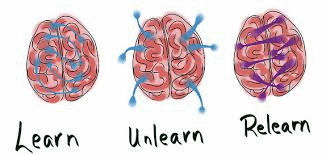
Dale S. Deardorff
|

